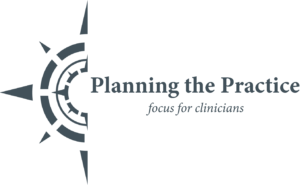
When You Don't Meet Goals

For people who struggle in the area of planning or strategic planning not meeting goals is often emotionally devastating. At the outset of this article let me encourage everyone to treat goal setting and planning as a practice. Remember, our goal at Planning the Practice is to help you achieve your growth goals by developing daily intentional habits that will make a difference in your life.
Sometimes we set goals that are very personal to us and that have implications for our relationships with family and friends. Other times we set goals because they are related to the work we do. Either way, the goals we set often have great meaning for us. Achieving them may mean a big promotion at work, an improved marriage, a closer relationship with children, or the completion of a doctoral dissertation (I know there is someone out there this last one is speaking to).
Not meeting goals can become very emotional for some as if it’s a personal reflection of who they are as a person. As I have mentioned in previous posts this kind of thinking comes from a fixed mindset. Whether you start out in this fixed mindset or not, the overarching idea is to move closer to a growth mindset by asking yourself what you can learn from not meeting one or more of your goals.
When we set goals and do not meet them, we need to engage in a process that helps us reflect on and understand what happened, assess our behavior, and process your process. We call this the RAP method and encourage you to use this method in the weekly and quarterly reviews of our Planner & Journal.
Step 1: Review and Reflect
All three steps in the RAP Method are critical. Perhaps this is the most important. If you are not able to accurately review and reflect on the past in order to inform your future, you won’t be able to complete these steps in a way that will help you meet future goals. First, you must find a way to put your mind in a nonjudgmental space (fixed mindsets will have trouble with this). Being in a nonjudgmental space will help you notice your thoughts, feelings, and actions of the past as they relate to the goal(s) you did not meet. You want to reflect on all the ways, including a potential fixed mindset, that hindered you in meeting the goal.
Your nonjudgmental review should include going through your planning system, looking at meeting dates, notes, actions, tasks, etc. everything that is potentially related to not meeting the goals(s). Was timing a factor? Was the goal a good goal to begin with? Were you able to break the goal up into manageable steps over the course of time? How close did you get in meeting the goal?
Step 2: Assess
Now that you have spent some time reviewing and reflecting on the past, you want to assess all the information you collected. You are looking for primarily, behavior but also thoughts and emotions that may have gotten in the way of meeting your goal(s). Start with behavior because it is often the easiest for you to assess. For example, you may be able to look at a goal and the information you collected in step 1 to easily see you did not allow enough time for meeting the goal. How people think of time is interesting and I will write on that subject later. For now, just now we all have the same amount of time. We all have 24 hours in a day, 730 hours every month, 8,760 hours in a year. We can’t create or ‘make’ time (phrased often used by busy people). The best we can do is decide how we are going to use the time we have.
The more difficult part of assessment is to understand more about the thoughts and emotions that got in the way of meeting our goal(s). Some people struggle with focus and staying on a task for very long. Other people allow negative thinking to get in the way of meeting goals. According to Beck’s CBT model for any situation we encounter, our beliefs, thoughts, and emotions, interact to produce a behavior. I often tell my therapy and coaching clients, the most difficult thing to do is to work in the realm of beliefs, thoughts, and emotions but it is the most effective if you want to produce a behavioral change.
Step 3: Process
The final step in the RAP method is to process all the information you have. What we mean by process is to do something with it. There are many questions you could ask in this step but perhaps the best is “What is the next action?”. Depending on the information you collected in the previous two steps you may decide the goal needed much more detail than you initially provided. You may decide the goal didn’t align with your vision and mission. You may want to use our Purpose Planner to help you think more about your purpose in life.
Perhaps your review and assessment helped you to think more strategically about your understanding and use of time. Maybe you conclude that you have given too much control of your life to someone or something else. There have been many conversations I have had with clients, colleagues, friends, and family about the notion of responsibility. While I don’t agree with everything Glasser has to say, I do appreciate how he discusses the concept of total responsibility in his Choice Theory. I think too many times we take on responsibility in the workplace and in our personal lives that is not ours. When things go wrong, and they often do, we question ourselves and our abilities. Instead, we should be questioning whether this ‘thing’ that is in the way is our responsibility, to begin with.
Because we are about helping people develop good practices, I want to remind you that it takes 10,000 hours to master anything. If you are new to planning and you need to hear this, I give you permission not to meet all of your goals. Instead, work on practicing a growth mindset when it comes to goal setting. Work on using a method like RAP to help you understand more about yourself and what tends to get in the way of setting and meeting your growth goals. The more you understand about yourself the more you will be able to plan your practice.
We would love to hear your story about times you have not met goals and the process you used to overcome. Head over to our Facebook page or leave a comment below to keep the conversation going.